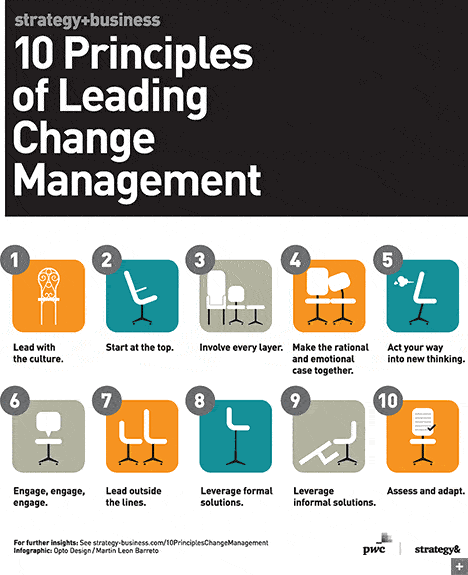Human beings tend to create stasis and stick to it. Nevertheless, the status quo is a growth inhibitor in business. That is why you might have decided to hire remotely. If so, ping us now, and we’ll take you through the process.
Still, you might be wondering how to prep your organization for your new remote workers, how will your existing employees react to this decision…and how will all this change affect your business.
It’s understandable you’ll face resistance from your current employees. They may be afraid of several things – like how they’ll be expected to adapt, what new things they’ll have to learn, what kind of people they’ll work with, how their work will change… and so on. And if you fail to handle the change process strategically, you face two major problems.
First, a pushback from your current employees that ultimately leads to compromised work from their end. After all, Newton’s third law of motion—for every action (force) in nature there is an equal and opposite reaction—applies just as much to humans as it does inanimate objects.
And second, a failure of the whole initiative of hiring remotely. The latter, of course, means a significant loss in savings and other opportunities for your company.
Specifically, if you’re hiring remotely for the first time and are onboarding many such employees concurrently, you cannot merely spring the changes on to your current employees and expect their cooperation.
Instead, you’ll want to follow a charted course that minimizes disruptions to your actual work. So that while you bring remote employees on, your team’s productivity and happiness, as well as your company’s success and growth, don’t suffer.
Levels of Change Associated with Hiring Remote Workers
For an established company with employees working from the same office, changing the course of hiring will have repercussions at the individual, initiative, and enterprise levels.
Individual Level Change: This concerns the people who will work directly with your remote hires, every day. Such as project members and direct managers. The change will naturally “hit them the hardest.” Meaning they’ll have to learn to work with colleagues who aren’t present in the same office. So they may feel that the remote colleague is only a perfunctory team member. They may also feel “begrudged” to have to learn new ways of doing things, especially because of someone else. The best way to counteract the resistance from your current employees is to be open with them, engage them in the entire process, and make it beneficial for them. An appropriate benefit, in this case, could be allowing your current employees to telecommute part-time.
Initiative Level Change: This concerns how the actual work will change given that a part of the team is now working remotely. We will delve more into this in just a bit. But consider how some internal processes have to change to make room for the remote staff. Let’s say a few members of a project talk about a problem over lunch and come up with a solution. Where will the remote team members fit into this? They’ll merely get “told what was decided” without getting a chance to participate in the discussion? Measures need to be taken to have those discussions online where everyone can get involved.
Enterprise Level Change: How will your entire company and its policies change due to remote hiring? How will payroll, HR, and other teams work differently to accommodate this change? How many of the initiative-level modifications will you also implement in the rest of your company? (Say, you’re using a remote project management tool for your remote employees, will other teams use the same tool?)

A Guideline for Tackling the Change of Working with Remote Team Members
While the changes every company has to go through when hiring remote staff will vary, here’s a look at the more ubiquitous issues to remember.
- Acceptance: Once you’ve decided to hire remote employees, you’ll have to let your current employees “come to terms” with this change. Instead of forcing your ideas on them, let them come up to speed on their terms. Involve them in a discussion to find out what their concerns might be. What kind of benefit they see themselves enjoying because of this change. What kind of incentives they may seek and you might be able to provide. Find common ground that’ll make this change palatable for all concerned.
- Planning and Readiness: Getting ready to welcome remote workers into the fold entails more than dealing with logistics. Your current team will have to adapt – both to diversity and to new ways of doing things.
- Culture: A 2013 survey (video) from Strategy& and PWC shows that while most people consent to the importance of culture in the workplace, most neglect it to adverse effects. Intellectual diversity can be a jumping point for new ideas and growth. But especially if your remote hire is from another part of the globe (and why shouldn’t they be?), your existing employees will have to learn a bit more about other cultures. Sharing and learning about new cultures should be a two-way street.
- Training/Support: Depending on how much procedural changes your company will implement, it’ll necessitate training and support options for your current employees (as well as new ones). If you’re adopting new technology, for instance, you’ll have to hold a learning session to make sure everyone is on the same page.
- Procedural Changes: Whether you’re hiring one remote worker or a whole group, you’ll have to take measures so that your current employees and remote ones can work together seamlessly.
- Communication: Your entire team will have to communicate in such a way that every change in a project, every new idea, every discussion is documented for all to access. In case the present team is unaccustomed to this level of communication, set out a plan for all to follow. This will add structure and form to team communications so that no one is left out of important messages.
- Tools and Technologies: Figure out what kind of new tools you’ll need to work with distributed teams. From communications tools (like Skype and Zoom) to work management (Trello) to time monitoring (Hubstaff) – there are many options. But whichever you choose, make sure everyone on the team knows how to use them.
- Time Zones and Turnarounds: Working with a newly distributed team means having to change pace to accommodate different time zones. Depending on where your remote employees are located you may experience delays in response times. So make room in your schedule for different turnaround times, when to assign work, and when to get your entire team together for meetings and hangouts.
- Review/Monitor: As with any change, you’ll have to monitor how your current team is adjusting to working with remote colleagues. If some practices are entirely new to them, they might slip into old ways of doing things. That’s why include checks and measures to prevent slip-backs.
That hiring remote employee is right for your business is not a debate. However, it’s also human to resist change – like an undertow to a tide. The thing is companies often tend to follow Newton’s first law – they persist in uniform motion unless an external force acts upon them.
Remote work is changing the work landscape copiously. Either your company uses its momentum to jump onto the next level, or it gets left behind. Managing the changes that come with remote hiring – well, that’s just details of a very profitable plan. If you want us to help you hire remote employees who can step into your company’s work rhythm without missing a step, call us at +1-888-886-7343 now.





